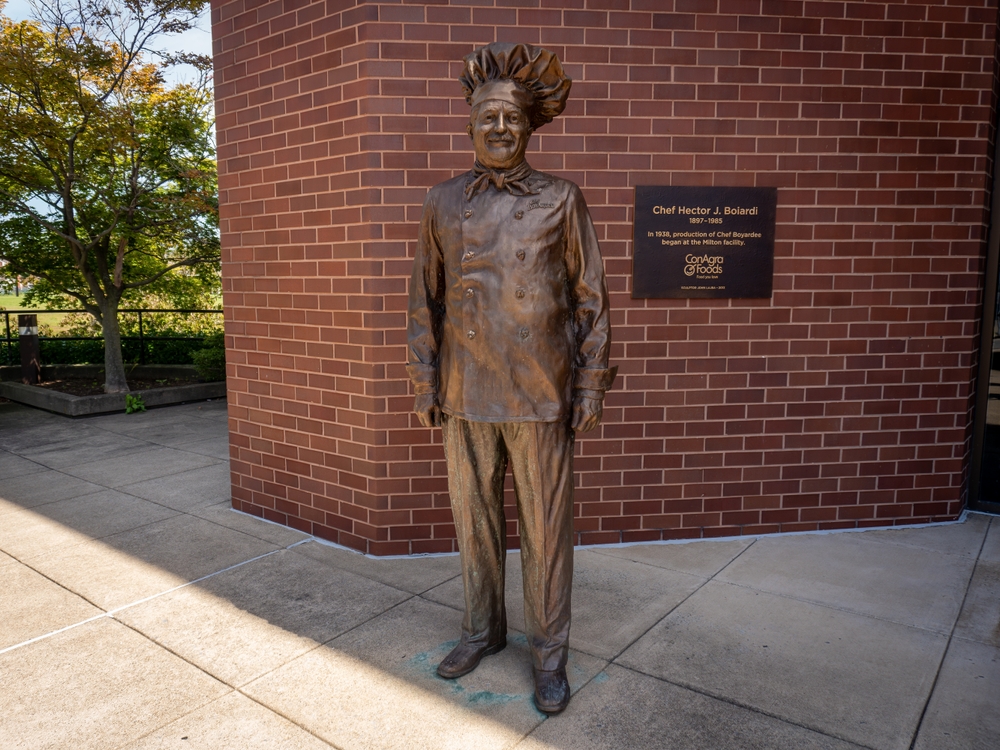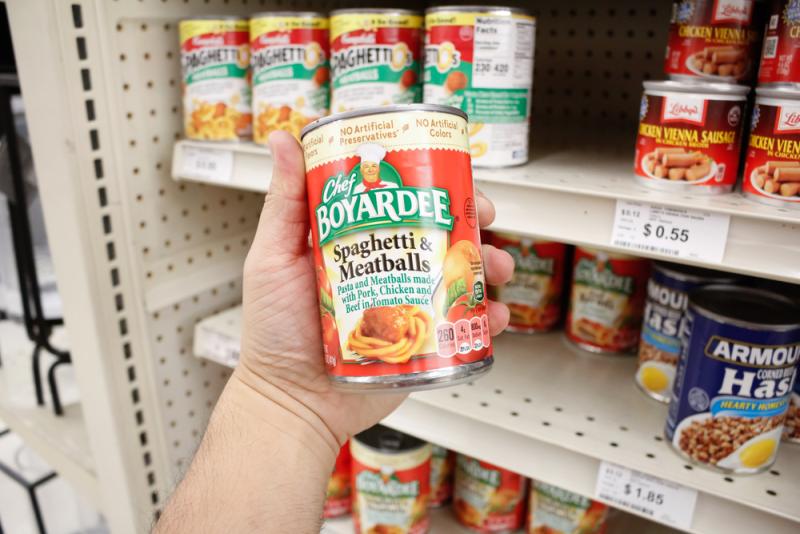The recent announcement by US food manufacturer The Kraft Heinz Company that it’s planning to fill UK supermarket shelves with tinned spaghetti alla carbonara (at £2 a pop) was met with social media-driven shock by much of the Italian food-loving public. Many consider the move to be an affront to the integrity of Italian cuisine.
Though the outrage is understandable, watching the “carbonara controversy” play out on social media got us thinking about how Italian food in a can is nothing new. In fact, it’s been around for nearly a century.
It was in 1928 when pioneering Italian-born Ettore “Hector” Boiardi, also known as Chef Boy-ar-dee — a phoneticized version of his last name to make it easier for Americans to pronounce — started what would become a multi-million-dollar empire of mass-market “Italian cuisine.”
Packaging Italy for convenience
Brightly colored cylinders with Boiardi’s mustachioed face plastered on them have long offered families cheap meals of spaghetti and meatballs, lasagna and ravioli (once marketed by Madison Avenue with such print ad taglines as, “Enjoy Ravioli as truly Italian as the Tower of Pisa”).
The company later added pizza-making and complete meal kits to its lineup. Around 1966, Chef Boyardee launched one of its most enduring products, Beefaroni, a “beef” and‘ “macaroni” combo that soon became part of the American lexicon — it was even spoofed as “Beef-a-reeno” on an episode of ‘90s sitcom Seinfeld.
Who was the real Chef Boyardee?

Born in 1897 in the Piacenza province, Ettore Boiardi displayed an early passion for the culinary arts, securing his first job as an apprentice hotel cook while still a teenager. He honed his cooking skills in London and Paris, eventually immigrating to New York through Ellis Island at around the age of 16.
By 17, Boiardi had landed a gig at New York City’s toney Plaza Hotel, where he was eventually promoted to head chef. Even President Woodrow Wilson tapped him to cater his wedding reception in 1915.
In a twist of fate, Boiardi was recruited to be the chef at the Hotel Winton in Cleveland and while in Ohio, met and married Helen Wroblewski. In 1924, Boiardi, his wife, and his brothers Paolo (Paul) and Mario opened Il Giardino d'Italia restaurant, quite a feat at a time when Italian food was practically unheard of in the United States, except among Italian-Americans.
So successful was business that customers began asking the Boiardis how they could make their delicious pasta dishes at home.
“That’s what got the family thinking: What if we started jarring our sauce and selling it? Would it sell?,” Boiardi’s niece, Anna Boiardi, explained in a 2011 radio interview with NPR’s All Things Considered.
It was a simple idea and the start of Boiardi’s “American dream.”
Building an empire
By 1928, demand was high for their products, so the Boiardis opened a small processing plant. Their food continued to sell like hotcakes and their geographic area kept expanding.
The company survived even the Great Depression because of Chef Boyardee products, which company lore attributes to them being inexpensive and substantive. Over the years, sales continued to flourish, prompting Chef Boyardee to open a factory in Milton, Pennsylvania close to tomato fields. At one point, the company is said to have been the largest importer of Parmesan cheese from Italy. They also bought lots and lots of olive oil.
Around 1942, Boiardi began developing field rations for the US military, contributing to the war effort by feeding GIs during World War II. For service to his adopted country, Boiardi was awarded The Gold Star — one of the highest honors a civilian can receive.
At the war’s end, Chef Boyardee was raking in an estimated $20 million annually. The operation was finally sold to American Home Foods, but Boiardi stayed on as a company consultant until his retirement in 1978.
After a brief illness, Ettore Boiardi died in Parma, Italy at the age of 87. He was laid to rest at the All Souls Cemetery in Chardon, Ohio, long before certain corners of social media could come for him and his canned spaghetti.













